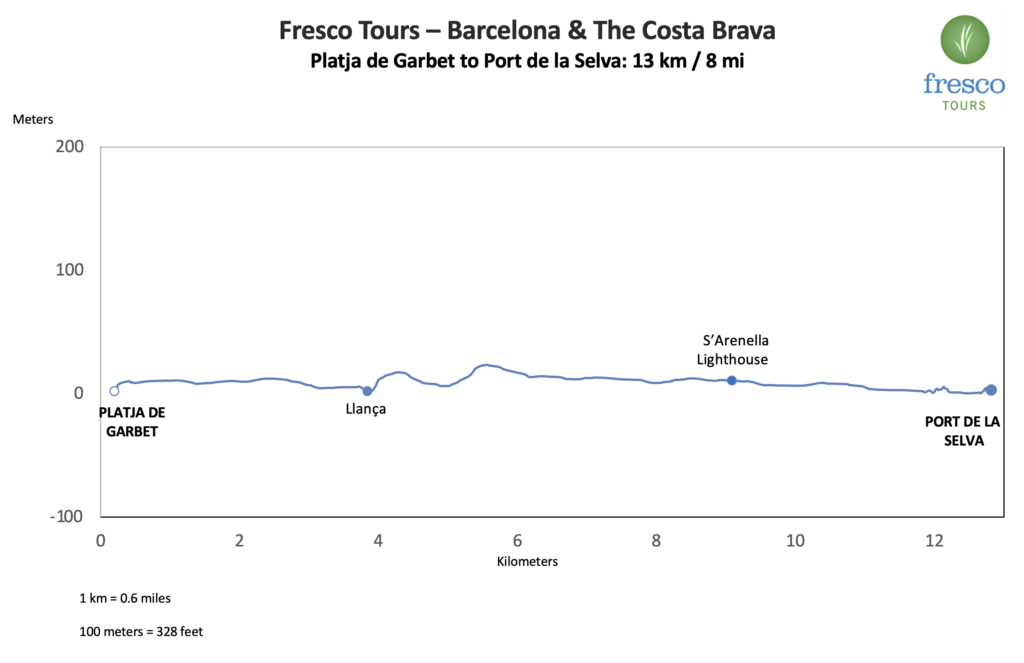Today we walk from Garbet to Port de la Selva.
Garbet
The quiet 350-meter-long beach of clear blue water is protected from the northen “Tramuntana” wind, nestled between the villages of Colera and Llançà. The wineyards on its northen side add to the beauty of this picturesque beach.

Llançà
Archeological vestiges prove that the land in and around Llançà was populated long before the Roman era. In the 9th century, the villagers moved their settlement a few kilometres to the interior, seeking protection against constant pirate attacks. The local economy was based on agriculture, with much of the land belonging to the Monastery at Sant Pere de Rodes. The fishing port remained virtually untouched throughout the centuries. In the 18th century, the population in the village grew significantly, with olive oil and wine exports to Genova, Marseille, Barcelona, and Central Europe. The phylloxera plague (1880-1890) affected the local vineyards and marked the beginning of Llançà’s decline. The trend turned upwards again in the 1960s with the arrival of modern tourism, which today provides the village’s major source of income.

El Port de la Selva
El Port de la Selva is a picturesque coastal village on the Costa Brava, a rugged and stunning stretch of coastline known for its cliffs, coves, and clear blue waters. Nestled between the Mediterranean Sea and the mountains, the town offers a picture-perfect combination of coastal scenery and natural beauty.
The village has retained its authentic character and traditional architecture, with whitewashed houses, narrow streets, and several historical buildings that reflect the region’s past. However, the highlight of the village is its traditional fishing port, where recreational and fishing boats add to the scenery.
Inland, the surrounding area is a paradise of hiking trails and views of the Mediterranean Sea. Indeed, this whole region is part of the Cap de Creus Natural Park.



















